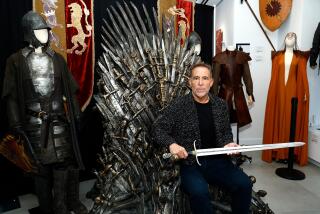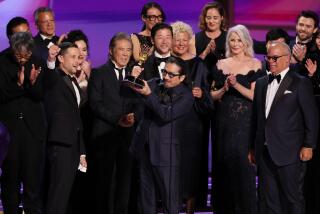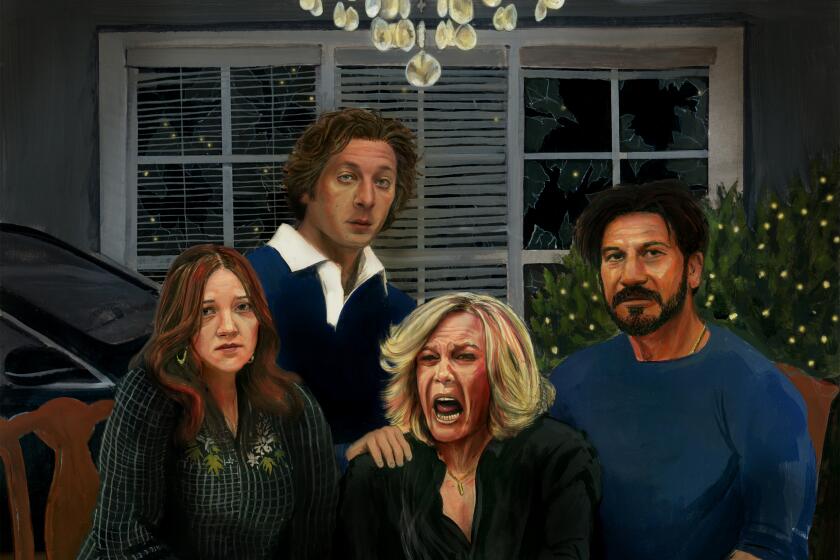The ‘Game of Thrones’ crew’s goal for its epic ‘Battle of the Bastards’: Show films how it’s done
With Season 6 of “Game of Thrones,” their first without the guidance of George R.R. Martin’s existing “A Song of Ice and Fire” books, series creators David Benioff and D.B. Weiss had fans on edge. With the secrecy of Westeros at an all-time high, where would the show runners take the story? It was a simmering story line between Sansa Stark and the cruel Ramsay Bolton that captured fans’ attention before boiling over into a ruthless clash to reclaim Winterfell between the Stark’s ragtag army and Bolton’s much larger forces.
Emmy voters took notice as Episode 9, “Battle of the Bastards,” scooped up six nods, one each in writing, directing, visual effects, sound mixing, makeup and editing, giving the series a leading 23 nominations. Under the direction of Miguel Sapochnik, it took 25 days to film that epic showdown, using hundreds of crew members and extras, dozens of stunt performers, 80 horses, four camera crews, a multitude of dead bodies and endless barrels of mud. Endless.
“We wanted to shoot a battle on a TV show that films would be referencing and trying to emulate,” says Emmy-nominated stunt coordinator Rowley Irlam. “That was our goal. To create something on an epic, cinematic scale that would stand up to anything shot on film.”
With a rather dense and unambiguous script in hand, Sapochnik and first assistant director Charlie Endean mapped out a shooting schedule so that all the dialogue would be captured prior to the action sequences. “Miguel was the driving force behind the creativity, and together with VFX, we all sat down in a big melting pot to throw out ideas that complemented each other,” says Irlam. “What we were trying to accomplish with Jon Snow’s [Kit Harington] journey, even though he’s a skilled fighter, was to make you feel that any random event could possibly remove our hero from the game at any second.”
One of those poignant moments happens early on with a stunning shot of Snow as he finds himself caught alone with enemy horses charging toward him. As the camera circles behind and then cuts to his defeated face -- the music leads us to believe it is Snow’s last breath before -- crash! -- his own cavalry smashes into the front line, saving his life.
“All those horses you see galloping toward Snow are real,” says visual effects supervisor Joe Bauer. “When the more violent actions take place we laid out ahead of time where the real horses would go and where the gaps would be. We then would populate those spaces with CG horses for the hard falls and impacts you clearly couldn’t do without killing a person or a horse.”
To help map out the battle, VFX gathered as much real-world data and imagery as possible from the Northern Ireland location. “We used witness cameras all over the place with one we called the ‘Eye in the Sky.’ It was a Canon 5D on a high crane that looked down on top of all the action,” says Bauer. “When we passed along all the information to Australian vendor Iloura to insert the CG horses, the first iteration they turned around was exciting so we knew we were in a good place.”
The battle’s immersive sound played an integral part to its realism as well. “For me, it’s never enough to just record the dialogue,” says production sound mixer Ronan Hill. “We try to record stereo effects in addition to a mono boom where possible, to get a real sense of drama. We even fitted mics to cameras on tracking crane arms and placed wireless mics on the horses to get clean horse hoof effects for the charge into battle.”
Finally, editor Tim Porter sifted through nearly 100 hours of footage to create a seamless battle scene. “The battle was the first sequence shot of the episode, which for me as an editor was fantastic, as I was free to concentrate on that sequence alone and immerse myself in the dailies without distraction. I got to treat the battle as its own film,” says Porter. “There were many fantastic shots within the sequence, with great scope and scale, but when we cut to them, the intensity of the action could be interrupted. It took time to find the right balance between scope and scale and character and story.”
“It really takes all the different departments putting their heads together step by step to make it work,” says visual effects producer Steve Kullback. “It was physically a challenging thing and nothing makes a battle look more grueling and hideous to be a part of than having circumstances that are really grueling and hideous to be a part of.”
More to Read
From the Oscars to the Emmys.
Get the Envelope newsletter for exclusive awards season coverage, behind-the-scenes stories from the Envelope podcast and columnist Glenn Whipp’s must-read analysis.
You may occasionally receive promotional content from the Los Angeles Times.







